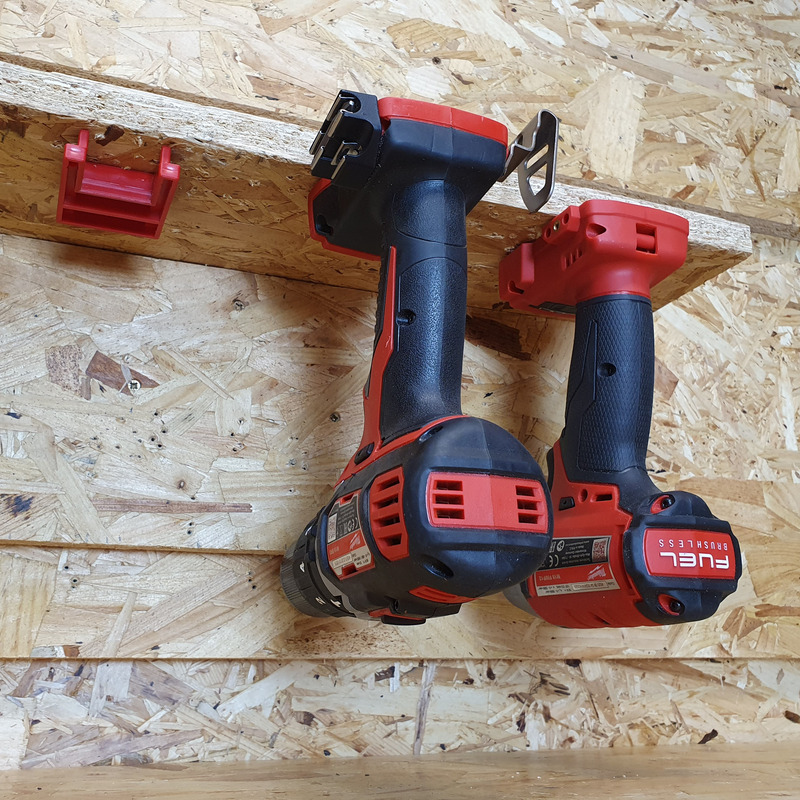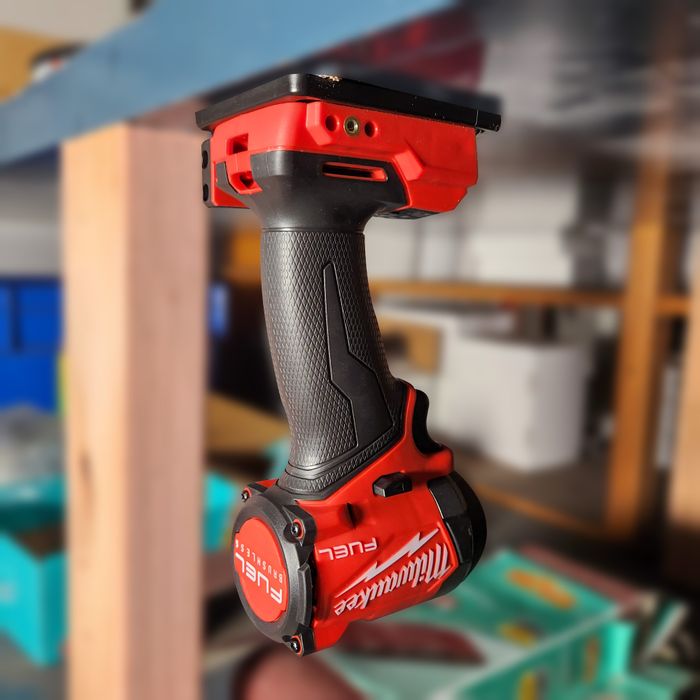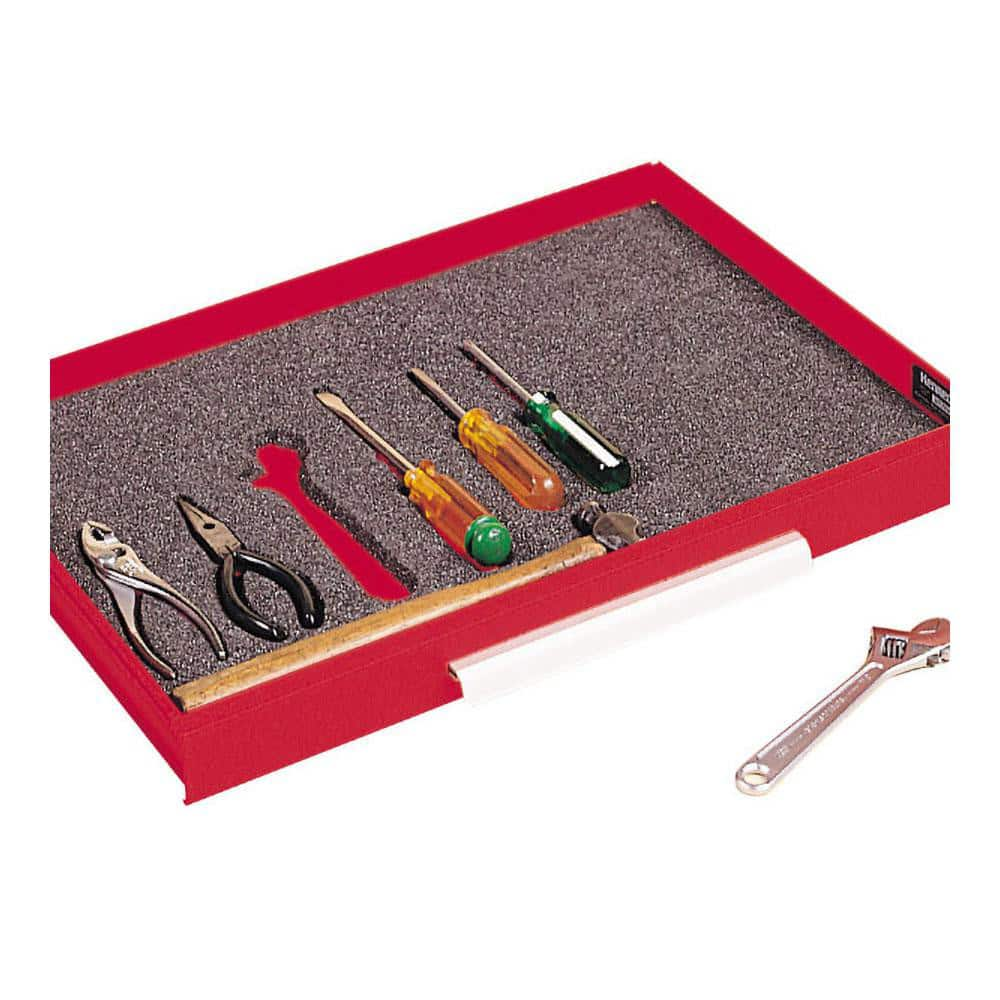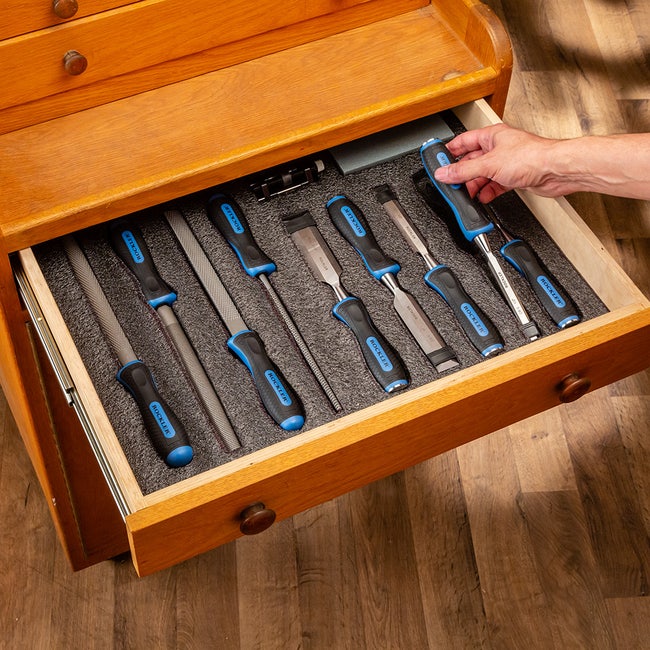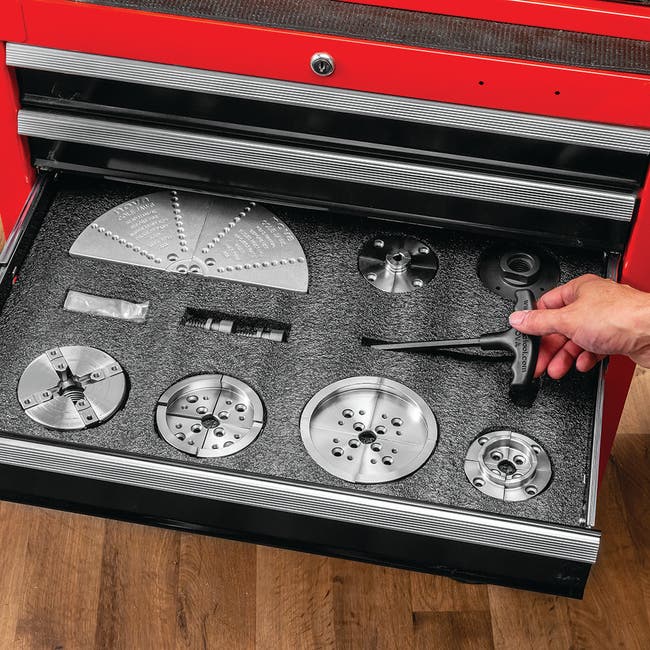
Efficiency and Organization with Milwaukee Tool Holders
Introduction
When it comes to improving efficiency and organization in the workplace, having the right tool holder can make all the difference. Milwaukee Tool is a well-known brand that offers a wide range of tool holders designed to help professionals keep their tools organized, easily accessible, and secure. In this article, we will explore the various types of Milwaukee Tool holders available, their features, benefits, and how they can help you maximize productivity and efficiency on the job.
Part 1: Overview of Milwaukee Tool Holders
Milwaukee Tool offers a diverse range of tool holders to accommodate different types of tools, from power tools to hand tools. These holders can fit seamlessly into the Milwaukee tool storage system. And providing a convenient and secure way to organize and transport tools. Whether you’re a carpenter, electrician, plumber, or general contractor, there’s a Milwaukee Tool holder that’s specifically designed to meet your needs.
Level 1: Types of Milwaukee Tool Holders
- Milwaukee Packout Tool Boxes
- Milwaukee Tool Bags
- Milwaukee Hard Cases
Level 2: Features and Benefits of Milwaukee Tool Holders
- Durable construction to withstand the rigors of the job site
- Customizable interiors to accommodate specific tools and accessories
- Quick and easy access to tools, saving time and improving efficiency
Part 2: Milwaukee Packout Tool Boxes
The Milwaukee Packout system is known for its versatility and durability. The Packout tool boxes can stack and lock together. And making it easy to transport multiple tool boxes at once. These tool boxes are available in various sizes and configurations. Allowing users to create a customized storage solution based on their specific needs.
Level 1: Features of Milwaukee Packout Tool Boxes
- Constructed with impact-resistant polymers for maximum durability
- Metal reinforced corners and locking points for added security
- Modular design for easy stacking and transportation
Level 2: Benefits of Milwaukee Packout Tool Boxes
- Versatile and customizable storage solutions for a wide range of tools and equipment
- Time-saving convenience with easy access to tools and accessories
- Efficient organization and transportation of tools to and from the job site
Part 3: Milwaukee Tool Bags
Milwaukee Tool bags are designed to provide a lightweight and portable storage solution for professionals on the go. These bags feature durable construction, reinforced handles, and ample storage space for tools and accessories. Whether you need a small tool bag for quick jobs or a larger bag for carrying more tools, Milwaukee offers a variety of options to suit your needs.
Level 1: Types of Milwaukee Tool Bags
- Tool tote bags
- Rolling tool bags
- Backpack tool bags
Level 2: Features and Benefits of Milwaukee Tool Bags
- Padded shoulder straps and handles for comfortable transportation
- Water-resistant and durable construction to protect tools from harsh job site conditions
- Multiple external pockets and loops for easy access to frequently used tools and accessories
Part 4: Milwaukee Hard Cases
Milwaukee hard cases are designed to provide maximum protection for tools and equipment. These cases are made with impact-resistant materials and feature customizable foam inserts to keep tools secure and organized. Whether you need a compact case for a few hand tools or a larger case for power tools, Milwaukee offers a range of hard cases to meet your needs.
Level 1: Features of Milwaukee Hard Cases
- Customizable foam inserts to accommodate a variety of tools and accessories
- Durable latches and hinges for secure closure and transportation
- Stackable design for easy storage and organization
Level 2: Benefits of Milwaukee Hard Cases
- Protects valuable tools and equipment from damage during transportation and storage
- Convenient and secure storage for organizing tools and accessories
- Versatile and customizable storage solutions for professionals in various industries
Part 5: The Benefits of Using a Milwaukee Tool Holder
A Milwaukee tool holder offers numerous benefits for professionals and DIY enthusiasts alike. One of the key advantages of using a Milwaukee tool holder is its durability and reliability. Milwaukee tools are known for their high-quality construction and long lifespan, and the tool holder is no exception. It is designed to withstand the rigors of daily use and provide a secure and stable storage solution for your tools.
Additionally, a Milwaukee tool holder can help you stay organized and efficient in your workspace. By keeping your tools neatly stored and easily accessible, you can save time and effort while working on projects. This can lead to increased productivity and a smoother workflow, ultimately resulting in a higher quality of work.
Furthermore, a Milwaukee tool holder can enhance safety in the workplace. By providing a designated place for each tool, it reduces the risk of accidents and injuries caused by misplaced or scattered tools. Overall, the benefits of using a Milwaukee tool holder are clear: increased durability and reliability, improved organization and efficiency, and enhanced safety. Whether you are a professional tradesperson or a DIY enthusiast, investing in a Milwaukee tool holder can have a positive impact on your work and workspace.
Part 6: How to Choose the Right Milwaukee Tool Holder for Your Needs
When it comes to choosing the right Milwaukee tool holder for your needs, there are several factors to consider. The first thing to think about is the number and type of tools you need to store. If you have a large collection of tools, you may need a larger tool holder with multiple compartments and pockets. On the other hand, if you only have a few essential tools, a smaller, more compact tool holder may be sufficient.
Another important consideration is the material and construction of the tool holder. Milwaukee tool holders are available in a variety of materials, including nylon, canvas, and leather. Each material has its own advantages and drawbacks, so it’s important to choose the one that best fits your needs and preferences. For example, a leather tool holder may offer superior durability and protection for your tools, while a nylon tool holder may be more lightweight and easy to carry.
Additionally, you should consider the portability and storage options of the tool holder. If you need to transport your tools to different job sites, a tool holder with a comfortable and adjustable shoulder strap may be ideal. Alternatively, if you work in a fixed location, a tool holder with a sturdy handle and hanging loops for easy storage may be more appropriate.
Part 7: Maintaining and Caring for Your Milwaukee Tool Holder
Just like your tools, your Milwaukee tool holder requires regular maintenance and care to ensure its longevity and performance. By following a few simple tips, you can keep your tool holder in top condition and enjoy its benefits for years to come.
One of the most important aspects of maintaining your Milwaukee tool holder is keeping it clean and free of debris. After each use, take the time to inspect the tool holder for any dirt, dust, or residue and clean it thoroughly with a soft brush or damp cloth. This will prevent the accumulation of grime and extend the life of the material.
Additionally, it’s a good idea to inspect the stitching, zippers, and other hardware regularly to ensure that they are in good condition. If you notice any loose threads, fraying, or damage, take the time to repair or reinforce them as needed to prevent further wear and tear.
Furthermore, if your tool holder is made of leather or other natural materials, consider applying a protectant or conditioning treatment periodically to keep the material supple and resistant to cracking or fading. Be sure to follow the manufacturer’s instructions for the specific type of material and treatment to avoid damaging the tool holder.
Finally, when storing your Milwaukee tool holder, try to keep it in a dry, cool location to prevent mold, mildew, or other damage. If you need to store it for an extended period, consider wrapping it in a soft cloth or placing it in a protective cover to shield it from dust and other contaminants.
By following these simple tips and taking the time to care for your Milwaukee tool holder, you can extend its lifespan and preserve its functionality, ensuring that it continues to serve as a reliable and secure storage solution for your tools.
Conclusion
Milwaukee Tool holders are designed to provide professionals with convenient, secure, and efficient storage solutions for their tools and equipment. Whether you need a rugged Packout tool box for heavy-duty storage, a portable tool bag for on-the-go convenience, or a hard case for maximum protection, Milwaukee offers a diverse range of holders to meet your needs. By investing in Milwaukee Tool holders, professionals can maximize productivity, organization, and efficiency in their work. Ultimately leading to improved job site performance and customer satisfaction.
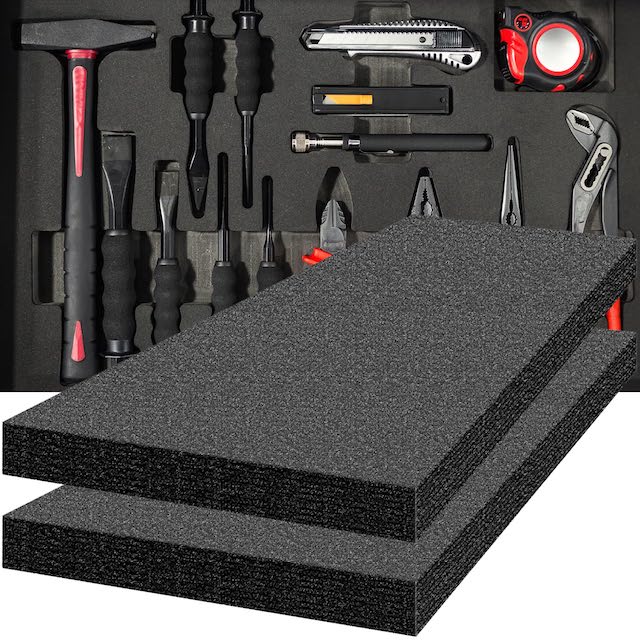
Tool Box Foam: Maximizing Organization and Efficiency
Introduction
Tool box foam is a versatile and practical solution for organizing and protecting your tools. Whether you are a professional mechanic, woodworker, or DIY enthusiast, having an organized tool box can save you time and frustration, leading to increased productivity and efficiency. In this comprehensive guide, we will explore the benefits of using tool foam, different types and styles available, and how to best utilize it to keep your tools safe and easily accessible.
Part 1: Understanding the Benefits of Tool Box Foam
Level 1: Protection and Organization
Tool box foam provides a secure and organized storage solution for your tools, preventing them from shifting or becoming damaged during transportation. The foam’s custom fit design ensures that each tool has its own designated space, preventing them from coming into contact with each other and causing friction or damage. This not only protects your tools but also prolongs their lifespan, saving you money in the long run.
Level 2: Time-Saving and Efficiency
By having a designated spot for each tool, tool box foam can significantly reduce the time spent searching for the right tool. This not only reduces frustration but also increases efficiency, allowing you to complete tasks more quickly and effectively. Additionally, the visual organization provided by tool box foam makes it easy to see if any tools are missing, preventing the loss of valuable equipment.
Part 2: Types and Styles of Tool Box Foam
Level 1: Pre-Made Foam Inserts
Pre-made foam inserts come in a variety of shapes and sizes to fit different tool boxes and tools. They are designed to fit specific tool sets and can be easily customized by cutting out the desired shapes to accommodate your tools. This type of foam provides a quick and convenient solution for organizing your tools, with minimal effort required.
Level 2: Customizable Foam Sheets
Customizable foam sheets allow you to create a completely tailored storage solution for your tools. These sheets can be easily cut and shaped to fit any tool box, regardless of size or shape. Customizable foam sheets provide the flexibility to create a unique arrangement for your tools, maximizing efficiency and organization.
Part 3: Utilizing Tool Box Foam for Maximum Efficiency
Level 1: Tool Organization
Utilize tool box foam to create a system for organizing your tools based on their frequency of use or specific job requirements. This will make it easier to locate and access the tools you need, saving time and increasing productivity. Consider using different colored foam for different tool categories or departments to further streamline organization.
Level 2: Custom Tool Storage
Customizing your tool foam to fit the exact shape and size of your tools ensures a secure and snug fit. This prevents tools from rattling around during transport and minimizes the risk of damage. Moreover, having a dedicated spot for each tool makes it easy to notice if any tools are missing.
Part 4: Tips for Maintaining and Cleaning Tool Box Foam
Level 1: Regular Cleaning
Regularly cleaning your tool foam is essential to maintain its effectiveness and prolong its lifespan. Dust and debris can accumulate over time, causing the foam to lose its grip and protection. Use a vacuum cleaner or compressed air to remove any buildup, and ensure the foam is completely dry before placing your tools back in the box.
Level 2: Replacing Worn Foam
As tool box foam is used over time, it may become worn or lose its shape. When this happens, it is important to replace the foam to continue protecting your tools effectively. Keep an eye out for any signs of wear and tear, and replace the foam inserts as needed to maintain optimal tool organization and protection.
Part 5: Benefits of Using Tool Box Foam Inserts
Using tool box foam inserts offers a range of benefits that make them a popular choice for organizing and protecting tools. One significant advantage is the customization options that foam inserts provide. By using a foam insert, individuals can create a unique organization system tailored exactly to their specific tools. This level of customization allows for better organization, which in turn leads to increased efficiency and productivity.
Furthermore, tool foam inserts provide excellent protection for tools. The foam’s soft yet durable material helps prevent damage to the tools from shifting and banging into one another during transport. This protection not only extends the life of the tools but also ensures that they remain in good working condition when needed.
In addition, using foam inserts in tool boxes can also improve workplace safety. This is particularly important in industrial settings where an organized and secure tool storage system is critical to maintaining a safe work environment.
Overall, the benefits of using tool foam inserts are numerous. From improved organization to increased tool protection and enhanced workplace safety, foam inserts offer a practical and efficient solution for tool storage and organization needs.
Part 6: How to Customize Tool Box Foam Inserts
Customizing tool foam inserts is a straightforward process that allows individuals to create a tailored organization system for their tools. To begin customizing foam inserts, individuals will need to measure the interior of their tool box and the shapes of their tools. This will help ensure a precise fit for the foam inserts. Next, the measurements should be transferred onto the foam sheet, and the outlines of the tools can be traced onto the foam with a marker.
Once the outlines are traced, individuals can use a sharp utility knife to carefully cut out the shapes from the foam. It’s important to take your time and cut along the lines as accurately as possible to create a snug fit for each tool.
After all the shapes are cut out, the foam inserts can be placed into the tool box, and the tools can be positioned into their designated slots. Customizing tool box foam inserts allows individuals to create a personalized and efficient tool organization system that maximizes space and protects tools from damage during transport or storage.
Part 7: Tips for Maintaining Tool Box Foam Inserts
While tool box foam inserts are durable and provide excellent protection for tools, it’s essential to properly maintain them to ensure their longevity and effectiveness. Here are several tips for maintaining tool foam inserts:
- Regular cleaning: Over time, foam inserts can accumulate dust, dirt, and debris. Regularly remove the inserts from the tool box and clean them using a mild detergent and warm water. Allow the foam to air dry completely before returning it to the tool box.
- Check for damage: Inspect the foam inserts periodically for signs of wear, tear, or damage. Look for any fraying, tearing, or compression in the foam that could compromise its ability to protect tools. Replace any damaged foam inserts as needed.
- Use protective covers: Consider using protective covers for the foam inserts to further shield them from dirt and debris. These covers can be easily removed and washed, extending the life of the foam inserts.
- Store in a dry environment: Moisture can damage foam inserts over time. Store the tool box in a dry environment and avoid exposing the foam inserts to excessive humidity.
By following these maintenance tips, individuals can prolong the life of their tool box foam inserts and ensure they continue to provide excellent protection and organization for tools.
Conclusion
Tool box foam is a practical and efficient solution for organizing and protecting your tools. By utilizing the benefits of tool foam, understanding the different types and styles available, and learning how to best utilize it, you can maximize the efficiency of your tool storage. With a well-organized and protected tool box, you can save time, reduce frustration, and increase productivity, ultimately improving the quality and efficiency of your work.

